Amelia Island’s Hidden Ecological Gem - Egans Creek Greenway
Explore Amelia Island's hidden Egans Creek Greenway—spot alligators, roseate spoonbills & herons on serene trails. Birdwatching tips & wild encounters await.
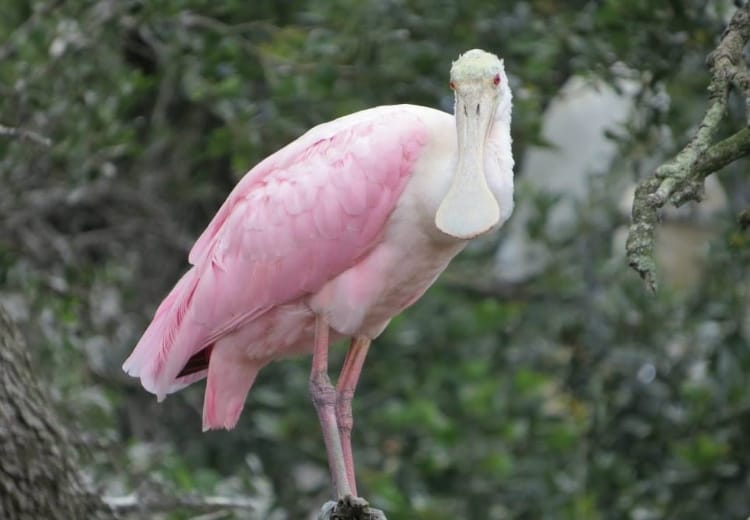
Amelia Island, situated in the northeast corner of Florida, draws over half a million visitors a year from around the globe. Many come for the 13 miles of white sand beaches, bike paths that wind through Fort Clinch State Park or down through the south end of the island and out to Big Talbot Island State Park, and afternoons spent window-shopping on historic Centre Street.
But in the middle of the island lies Florida’s version of a secret garden: 300 acres of protected land along Egans Creek opened for public use in 2000 as Egans Creek Greenway.
With temperatures mild enough to welcome visitors year-round, the Egans Creek Greenway offers something for everyone. Open to those on foot or bicycle, the park offers several short trails that can be enjoyed for short outings or joined together for hours of adventure in the great outdoors. You can find a map of Egans Creek Greenway here.
Where to see the best birds
You don’t have to be a birder to appreciate the feathered friends you’ll see in Egans Creek Greenway. Spotting a bright pink roseate spoonbill will no doubt make your daughter squeal with joy, and you can find a real-life Woody Woodpecker lookalike quite often at the Jasmine Street entrance.
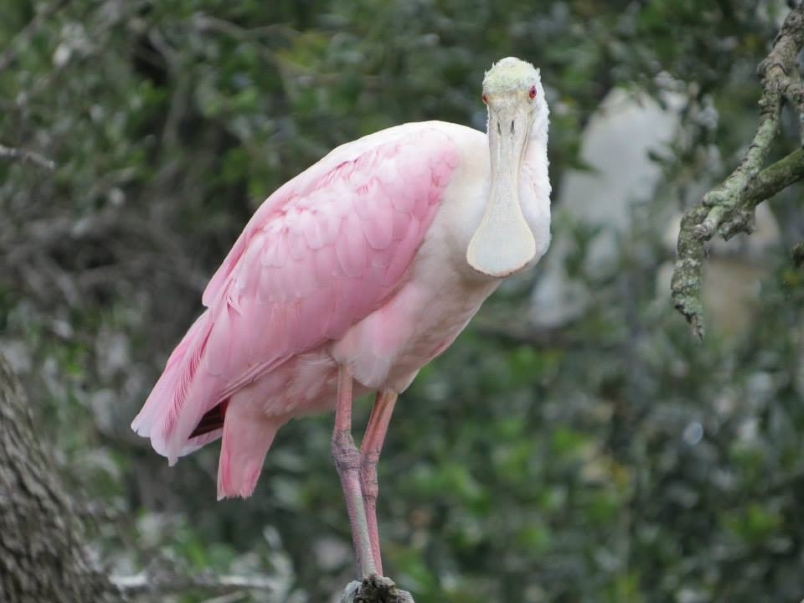
Herons, egrets and other wading birds flock to Egans Creek Greenway at feeding time, so you’ll want to consult the tidal charts before heading over. Great blue herons, little blue herons, green herons, tri-colored herons, snowy egrets, great egrets and wood storks are all frequent visitors to the greenway.
I recommend going as close to low tide as possible, and you’ll have the most luck when low tide falls close to sunrise or sunset. For wading birds, enter from the Atlantic Rec Center at the north end of the greenway and travel the green trail.
If you’re on the hunt for the pileated woodpeckers (who will no doubt remind you of Woody the Woodpecker), park on the right-of-way on Jasmine Street and enter the path on the north side of the street. A pair of pileated woodpeckers tend to hang out near the top of the trees at the very first bend in the path, about twenty yards in from the street. Trust me, you’ll know one when you see it.
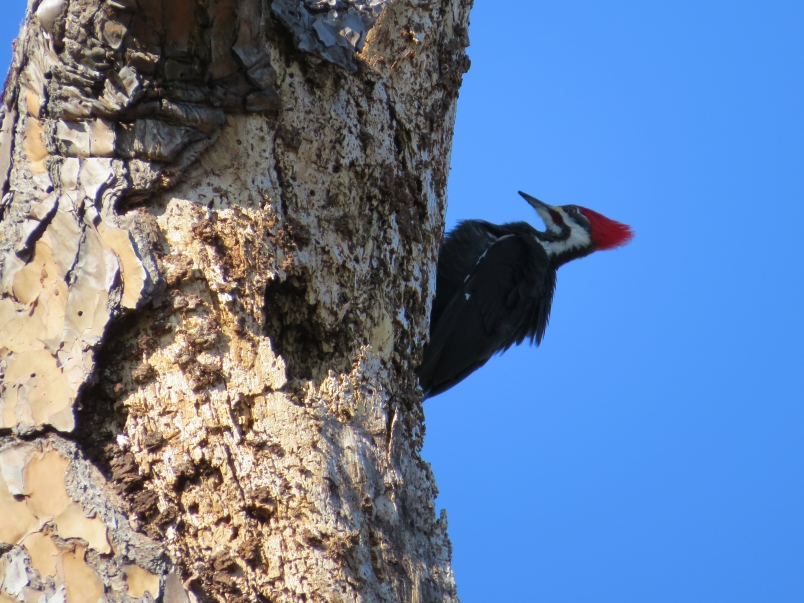
At any given time you’ll also likely encounter red-winged blackbirds, hawks, bluebirds, and a variety of warblers and other song birds throughout the trails.
Where to see alligators
When you think Florida, you think about alligators, right? If spotting one of these in the wild is on your bucket list, Egans Creek Greenway is the place to do it. There are a few places to find them pretty much year-round.
If you enter from the north end of the greenway at Atlantic Rec Center, follow the path straight back until you get to the first water on your left. There’s a pretty good size alligator who likes to spend time there, but you’ll have to look close. I’ve never seen this one on the bank, so you have to look for a pair of eyes watching you from the water.
On the other end of the greenway, if you enter from either the south side of Jasmine Street or from the Residence Inn parking lot, the alligators are more plentiful. Last winter, there were over a dozen younger alligators under three feet each clustered on the right-hand side of the blue trail just before it hits the north end of the red trail. But be careful, because a much larger alligator was right there with them, and was right up on the bank with its tail hanging out on the path.
It’s fairly common to see alligators lying on the banks or in the water throughout the greenway south of Jasmine Street, so you’ll have more luck here than on the northern side of Jasmine.
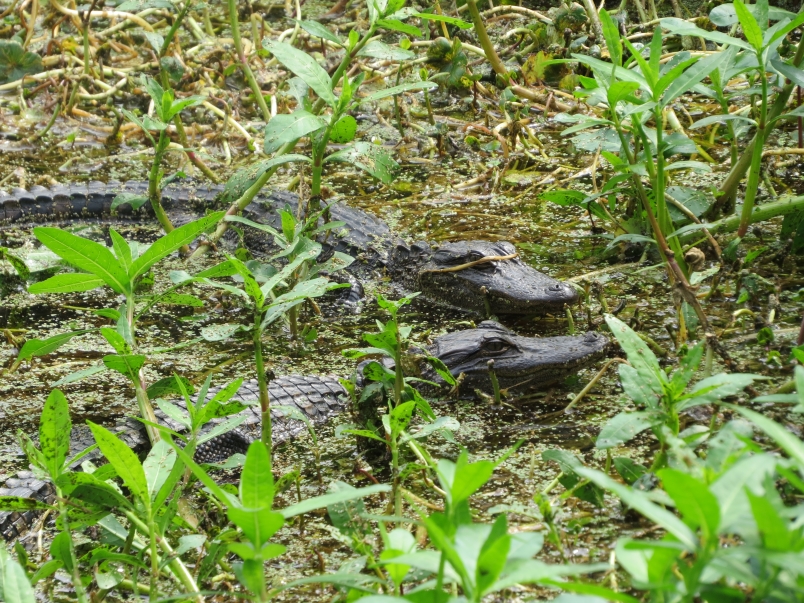
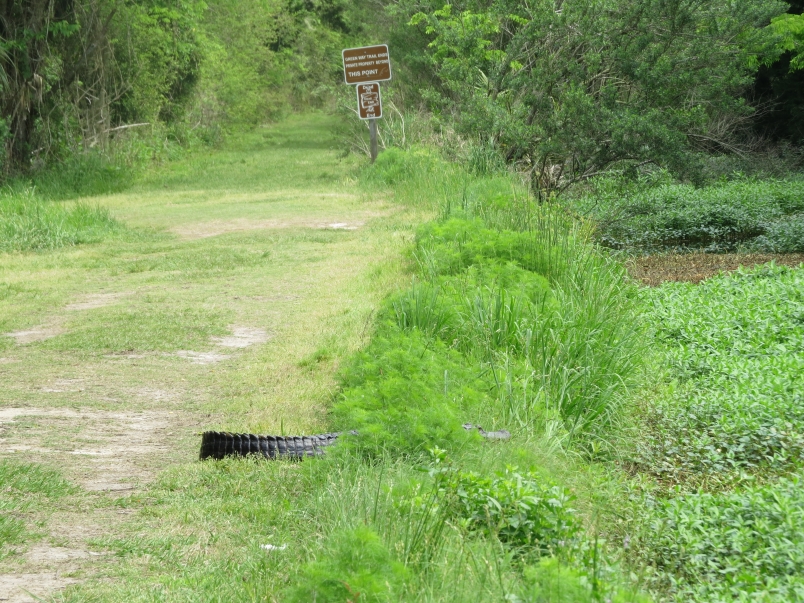
Other advice to get the most out of your visit
In addition to advising that you visit at low tide so you can see the many wading birds who call the island home, there are a few others tips to help you enjoy your visit:
• The northern end of the greenway between Jasmine and Atlantic tends to be exposed to the sun the majority of the day, whereas the southern end from Jasmine to Sadler is almost entirely covered by trees
• The most abundant parking is at the Atlantic Rec Center, but you can park in the right-of-way on Jasmine or in one of the few marked spaces at the Residence Inn
• The greenway is never really crowded, being that it is a hidden gem
• The mosquitos can be heavy in the spring (although they are sprayed for at various times), so be sure to bring repellant
• The paths are largely covered by grass, so unless it’s rained recently you don’t have to worry about mud or wearing any specific type of shoes
The greenway is more than just birds and alligators – turtles, butterflies and bunny rabbits are also frequently-encountered residents. I know it’s hard to tear yourself away from the beach sometimes, but next time you’re on Amelia Island, set aside some time to explore Egans Creek Greenway. You won’t regret it.




